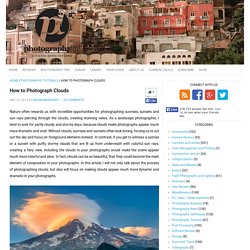

Step by Step Guide to Beautiful Bokeh Effect. Bokeh refers to a soft out-of-focus background that you get when shooting a subject.

The key to achieving it is using a fast lens at its widest aperture. If you’re interested in creating ‘bokeh’ in-camera, keep reading. Why Is Aperture Important for Bokeh? Bokeh is almost entirely down to the lens you use. A bokeh lens, if you will. That’s why the widest aperture of your lens is important. If we use an aperture of f/2.8, we get a very shallow depth of field. The wider the aperture, the more bokeh blur will appear in your image. How to Use a 10 Stop Neutral Density Filter for Long Exposure Photography. How to Photograph Fireworks. LearnMyShot – Photography Tutorials, Tips & How To Videos. HDR Photography Basics and How to Get Started. High dynamic range photography is still in its infancy as an art form, but it’s becoming more and more popular every day.

“Nami Island : HDR #2″ captured by Aiman (Click image to see more from Aiman.) The reason for its increasing popularity is that never before has an image on your computer ever been able to compete with the imagery in the human brain. Now, of course, I am not saying that this high dynamic range photography is better than being there on the scene with your own eyes and the emotions you feel, but it is a step in the right direction. As we explore this high dynamic range process, these images will start to arouse those deep memories and emotions, deceiving the mind into much more than just a normal photograph. What is high dynamic range photography (HDR)? Basically, it’s taking multiple photos of the same image with many different exposures.
How to Photograph Clouds. Nature often rewards us with incredible opportunities for photographing sunrises, sunsets and sun rays piercing through the clouds, creating stunning views.

As a landscape photographer, I tend to wait for partly cloudy and stormy days, because clouds make photographs appear much more dramatic and vivid. Without clouds, sunrises and sunsets often look boring, forcing us to cut out the sky and focus on foreground elements instead. In contrast, if you get to witness a sunrise or a sunset with puffy, stormy clouds that are lit up from underneath with colorful sun rays, creating a fiery view, including the clouds in your photographs would make the scene appear much more colorful and alive.
In fact, clouds can be so beautiful, that they could become the main element of composition in your photographs. In this article, I will not only talk about the process of photographing clouds, but also will focus on making clouds appear much more dynamic and dramatic in your photographs. HDR Photography Tutorial. This is a detailed tutorial on HDR Photography for beginners and how you can create HDR images from single or multiple photographs using different exposures.

While I was driving through Rocky Mountains last year, I saw a beautiful sunset. It was so beautiful, that I stood there in awe for a moment, before taking out my camera and attempting to take a picture. I took one quick shot of the sunset and quickly realized that there was too much contrast between the sky and the mountains for my camera. The image came out horrible – the sky looked somewhat fine, but the mountains were pitch black. I only had my camera and my trusty tripod with me, so I knew that I did not have many options. Photomatix HDR photography Tutorial Introduction. How to Take Photos in Fog, Mist or Haze. Photography in fog, mist or haze can give a wonderfully moody and atmospheric feel to your subjects.

However, it's also very easy to end up with photos that look washed-out and flat. This techniques article uses examples to illustrate how to make the most out of photos in these unique shooting environments. Clare Bridge in the fog at night (version 1) - Cambridge, UK Fog usually forms in the mid to late evening, and often lasts until early the next morning. It is also much more likely to form near the surface of water that is slightly warmer than the surrounding air.
Photographing in the fog is very different from the more familiar photography in clear weather. Examples of photos which appear washed-out and de-saturated due to the fog.Both photos are from St John's College, Cambridge, UK. Canon T2i 550D HDR Tutorial Using PhotoMatix 4.0Beta. Canon 550D T2i HDR Tutorial and Some Cool Video Footage. Depth of field: what you need to know for successful images.
Controlling depth of field is the key to successful photography.

Managing what is in focus (and out of focus) is strongly linked to the enjoyment of the image and this varies greatly with relation to subject matter. Landscape photography, for example, uses a large depth of field, keeping the entire image in sharp focus from corner to corner. This invites the eye to explore fine detail and truly experience distances, from distant cloud shapes to the wet sand at your feet. How To: 7 Quick Tips To Create Bokeh With Digital Camera. Bokeh comes from the Japanese word ‘boke’, which means fuzzy.

In photography, bokeh defines the quality of the blurred lights presented in a photo. We’re not referring to a badly taken photo that’s all out of focus, but rather the aesthetically pleasing background blur. Usually, this type of blur highlights the focused subject even more. Producing nice bokeh involves creating a shallow depth of field. Long Exposure Photography. 8 Effects Every Photographer Should Know About. How to Achieve Better Bokeh - 4 Simple Tips.
Guest post by Jim Harmer from ImprovePhotography.com.

When photographers use shallow depth-of-field, the purpose is usually to make the subject of the photo stand out from the background. Unfortunately, this usually means that the photographer forgets about the aesthetic quality of the area not in focus and pays attention only to the subject. Big mistake. Christmas Tree Lights: Tips For Getting Your Images to Sparkle. By Stacey Haslem Have you ever wondered how to get the lights on your tree to ‘sparkle’?

The trick is all in your aperture setting! Below I took a picture of my Christmas tree using several different apertures. I included 100 percent crops so you can see the transformation of the lights. f/2.8 1/15 second ISO 1600. Christmas Photography Tips. Photograph Outdoors.

How to Photograph Christmas Lights. Holiday lights brighten the mood no matter where they are. They might be in a downtown area, at a mall, or even at your own home. For those who love taking pictures, those lights can represent an opportunity to capture some beautiful, out of the ordinary images. “Merry Christmas Tree” captured by Richard Deane. (Click image to see more from Richard Deane.) A Tutorial of Simple Water Drops 2014 By Greg Easter of Natures Pic Photography. Camera Settings for Night Photography of Christmas Lights : Photography & Developing Film. A Tutorial of Water Drop Collisions 2014 By Greg Easter of Natures Pic Photography. How to Photograph Christmas Lights: 9 Steps. How To Take Photos Of Mist On A Lake After Sunrise. The sunrise and the fog. They are two of the most dramatic elements you can add to any photograph.
When you combine them, they can create the feelings of mystery and foreboding. Today, we’re going to learn how to take pictures of mist on a lake just after the sun has risen. There’s a special trick to this, and once you figure it out, you’ll have some pictures that are no less than awe-inspiring.